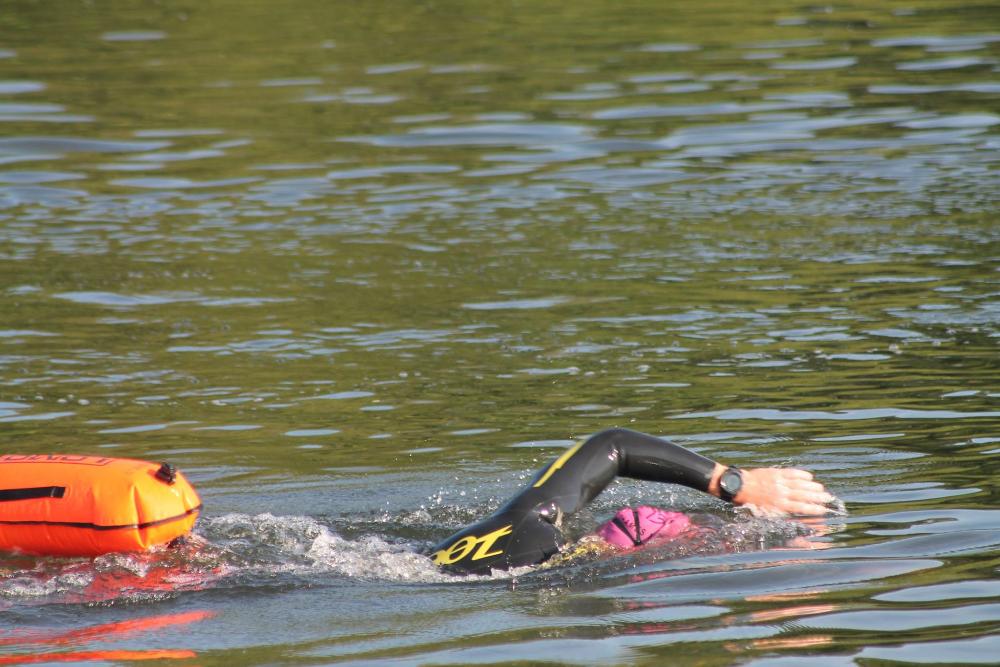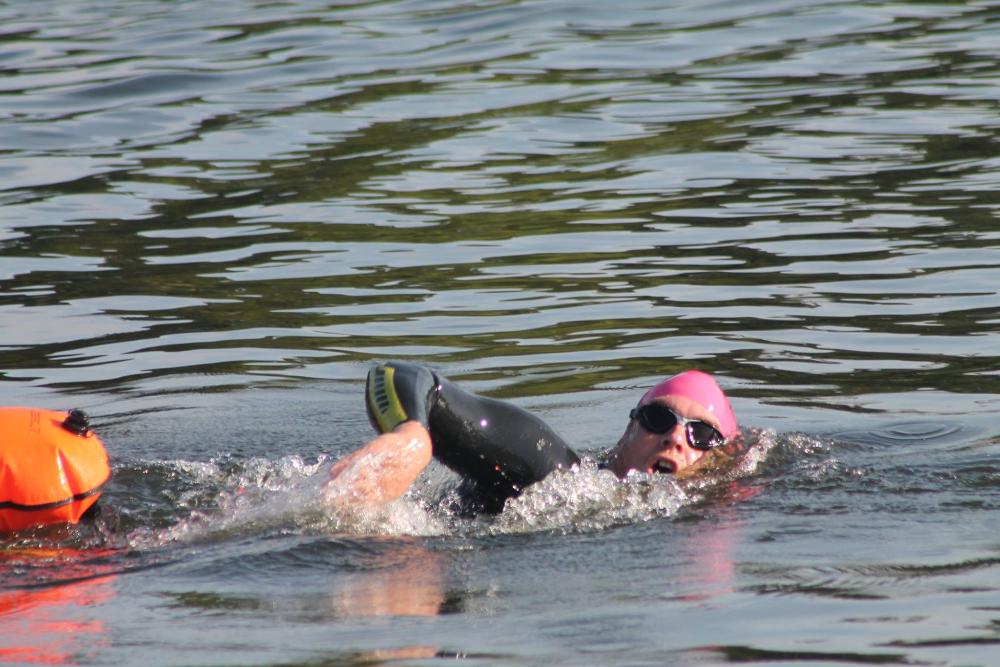The fastest stroke and the most popular for long distance and sprint events such as triathlon, front crawl, also known as freestyle, is probably the most important stroke you will need to master both as a recreational and competitive open water swimmer.
Mastering front crawl however takes time and a lot of practise as it involves coordinating the whole body in a complex series of moves; not to mention building the relevant muscle sets to build the power to repeat the stroke cycles efficiently over prolonged periods.
A Controlled Sequence of Movements
Basic survival instinct will often make us resist the water and thrash about in ways that will serve to reduce streamlining and tire you very quickly.
Freestyle involves a high degree of coordination of many parts of the body and therefore we must control any uncoordinated movements to reduce drag caused by eratic movements and poor body positioning in the water.
Core Aquatic Skills
Often referred to as 'core aquatic skills' in coaching circles, in order to attain efficient freestyle you need to make your entire body, from the tips of your fingers to your toes as sleek and streamlined as possible.
When swimming front crawl, this needs to be done first on one side of your body and then on the other as you perform the opposite arm cycle. This can only be done with a high degree of coordination, core strength and awareness of the body and how it moves through the water.
Start by going back to basics.
Practice pushing and gliding from the pool wall making your body as streamlined as possible. Notice how small changes in arm and hand positioning and especially the position of the head affect how far you can go.
Learn how to take a breath. Not too much, not too little. Understand how deeper glides will get you further than shallow dives. Practise in the sea or other open water. You will be naturally more buoyant in the sea than freshwater. A wetsuit adds to this. Duck diving is not only fun but can help you to learn streamlining and how to make use of the sea floor to propel yourself.
All of this will help you to improve your core aquatic skills.
Duck diving and exploring underwater while open water swimming is not only fun it will help you to improve your core aquatic skills as well as lung capacity. Notice the dolphin kick and how the swimmer releases air to counter the buoyancy of the wet suit.
Align head and spine
Poor control of the head position is the cause of many stroke issues. Make sure you keep your head in alignment with your spine in a straight axis.
This axis is key in other areas of the stroke such as the rotation of the hips and kick.
The imaginary line, the body axis
Imagine a line down the centre of your body extending out through the top of the head, perfectly central, each half of your body on either side of the line. This line plays a key role in many parts of the stroke.
The overarm cycle
On the over arm cycle keep the elbows at 90 degrees (we will cover other open water swimming techniques later) and spear the water about 30cm in front of your nose as close to the axis line as possible, but not crossing over it. Keep your arms symmetrical.
Pull cycle
Old school teaching told us to do an 'S' shaped pull but this is largely not taught any more. A straight pull is fine but bend the elbows immediately you start the catch phase as this will increase leverage and result in more power transference to the water.

Hands and fingers
Two schools of thought relate to a flat or slightly angled entry, in truth do whatever is comfortable to you. Spear the water neatly though, keeping the streamlined axis and avoiding arms straying from the axis line. Keep the hands straight at the wrists. Loosen the fingers. Do not keep the fingers together as this will increase tension and fatigue and in fact it has been scientifically proven that more force can be generated with fingers slightly splayed apart (up to 2mm) than together.
Keep the core tight and controlled
Use the core muscles to prevent uncontrolled movements of the body and increase streamlining and minimise lateral movements.
Legs and feet
Focus on keeping the legs together in the slipstream of the body. Heels of the feet should gently break the surface of the water, which ensures they are not dropping down too low and causing drag. This can be achieved by use of the lower back muscles and head positioning to bring the legs up. Refer to our blog on reasons why your legs may be dropping in freestyle.Ankles must be flexible with feet in the ballerina style, but flexible and loose so they flatten for downward kicks but also rotate from side to side. There are many exercises to improve ankle flexibility, we recommend doing them as this is also a key area many people have issues with and inflexible ankles will cause drag.
Do not try to kick too much as you may see olympic swimmers doing. The rotation of your hips will naturally cause your legs to kick to some extent, a simple extension of this action will suffice and save energy.
Breathing
Avoid the temptation to lift the head clear of the water. In fact you should not move the head much at all, but instead rotate the body around the body axis, including the hips, and keep a relatively fixed position on the head. There's no need to move the mouth clear of the water either - breathe into the bow wave that creates a trough in its wake.

Integrate The Stroke
The efficiency of front crawl and indeed any swim stroke, is to now pull all of this into a clean, efficient and fast sequence of movements.
Keep your head aligned with your spine at all times. Remember the body axis.
Keep movements fluid and relaxed. When you get tired, slow it down and think back to the basics of the stroke.
Do not force bilateral breathing if you are tired or not comfy with it. Get the core elements right first, then practise bilateral breathing.
Relax.
Swimming, although it uses much strength and control, is actually about being relaxed. A swimmer who is not relaxed, is not going to move efficiently in the water. By relaxing when you feel your stroke going to pot, you will in fact make up more time as you improve streamlining and focus more on the stroke elements.
Contact Us
We offer 1-1 stroke assessments as well as 1-1 coaching lessons/packages for swimmers of all levels and abilities, whether you are a triathlete practising for an event or a recreational swimmer, we can cater for all abilities.
